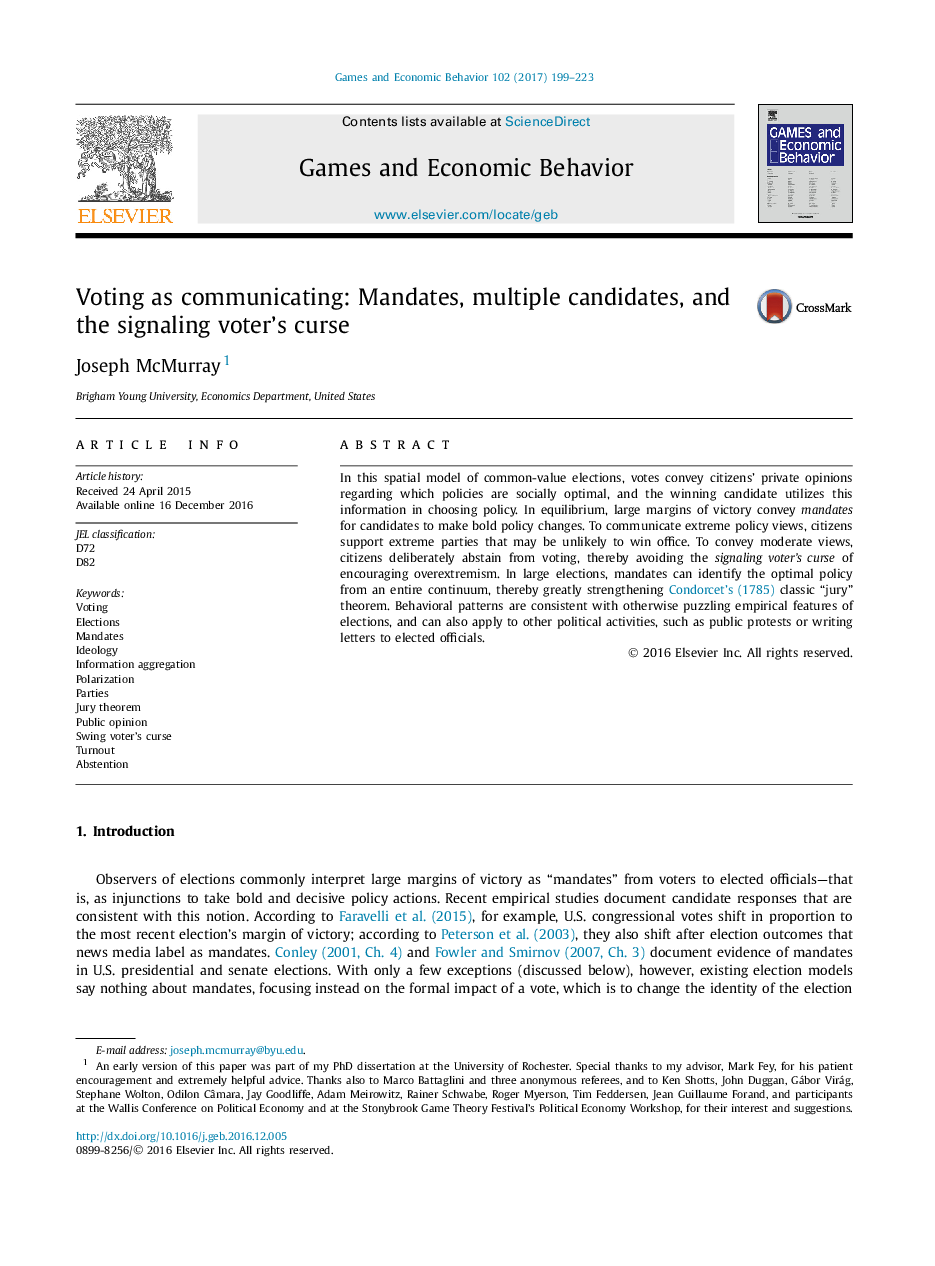| Article ID | Journal | Published Year | Pages | File Type |
|---|---|---|---|---|
| 5071287 | Games and Economic Behavior | 2017 | 25 Pages |
Abstract
In this spatial model of common-value elections, votes convey citizens' private opinions regarding which policies are socially optimal, and the winning candidate utilizes this information in choosing policy. In equilibrium, large margins of victory convey mandates for candidates to make bold policy changes. To communicate extreme policy views, citizens support extreme parties that may be unlikely to win office. To convey moderate views, citizens deliberately abstain from voting, thereby avoiding the signaling voter's curse of encouraging overextremism. In large elections, mandates can identify the optimal policy from an entire continuum, thereby greatly strengthening Condorcet's (1785) classic “jury” theorem. Behavioral patterns are consistent with otherwise puzzling empirical features of elections, and can also apply to other political activities, such as public protests or writing letters to elected officials.
Keywords
Related Topics
Social Sciences and Humanities
Economics, Econometrics and Finance
Economics and Econometrics
Authors
Joseph McMurray,
